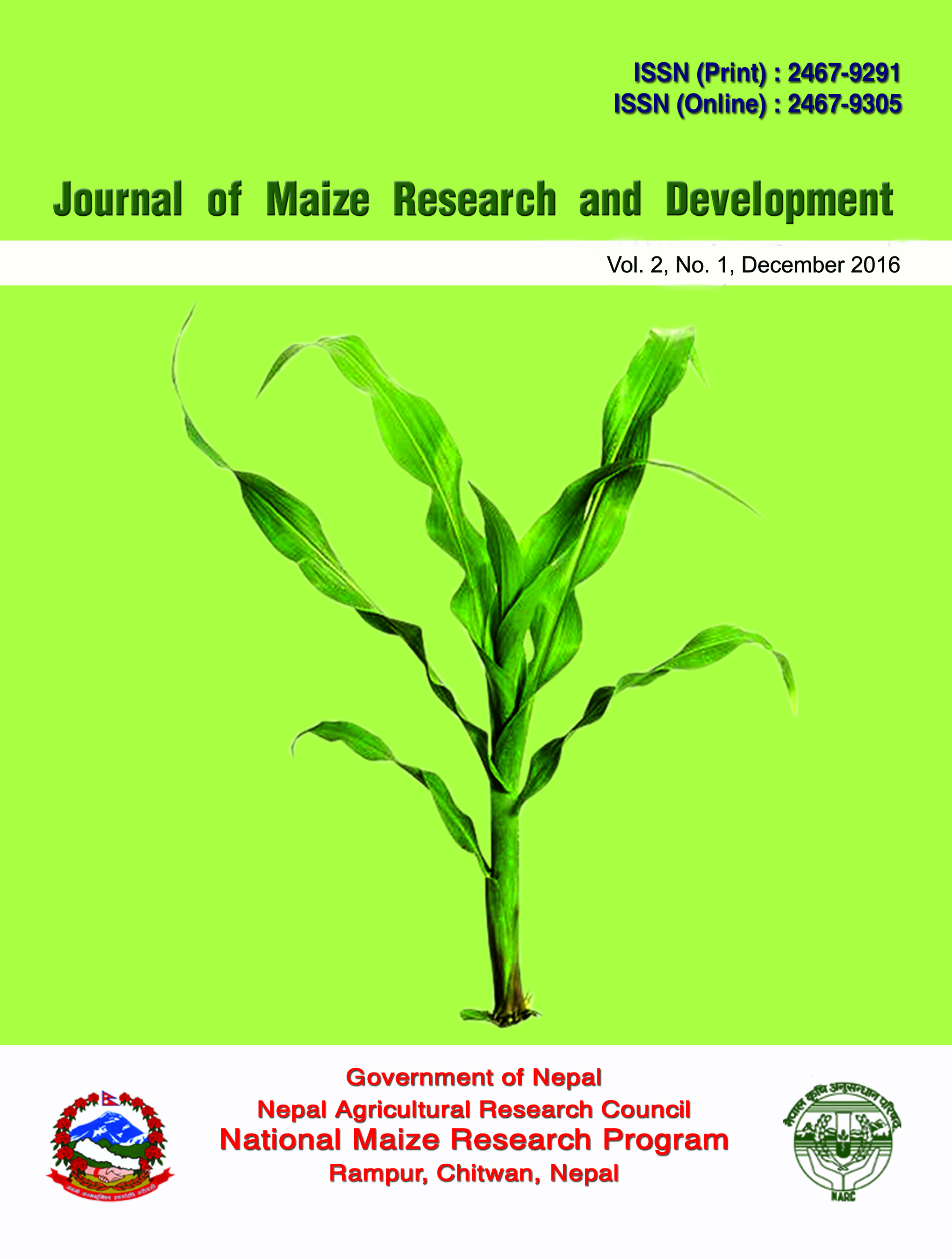Differential resistance reaction of maize genotypes to maize stem borer (Chilo partellus Swinhoe) at Chitwan, Nepal
DOI:
https://doi.org/10.3126/jmrd.v2i1.16226Keywords:
Breeding program, Chilo partellus, damage, Host resistance, MaizeAbstract
Maize stem borer (MSB), Chilo partellus Swinhoe, Lepidoptera: Pyralidae is one of the most important insect pest of maize in Nepal. Host plant resistance is the cost-effective, ecologically sound and stable approach to reduce damage by stem borers. Forty four maize genotypes were screened for resistance to maize stem borer at the research field of National Maize Research Program, Rampur during spring seasons (March to June) of two consecutive years 2013 and 2014. The maize genotypes were evaluated in randomized complete block design with three replications and data were collected on foliar damage rating, tunnel length and number of exit holes made by the borer. The foliar damage and tunnel length damage were significant for genotypes for both the years. The exit holes were not significant in 2013 but significant in 2014 ranging from 2-6 scale. The foliar rating ranged from 2 to 5.5 in 2013 and 1.1 to 4.5 in 2014 on a 1-9 rating scale. The highly resistant genotypes (<2.0 score) were R-POP-2 and RML-5/RML-8. The tunnel length ranged from 3.2 to 22.5 cm in 2013 and 4.2 to 20.4 cm in 2014 on 0- >10 cm scale. The least susceptible genotypes (<5 cm) were RampurSO3F8, RampurSO3FQ02 and RampurS10F18. The genotypes having least exit holes (2.0) in 2014 were RampurSO3F8, RampurSO3FQ02, RampurS10F18. Thus less damage parameters were observed in R-POP-2, RML-5/RML-8, RampurSO3F8, RampurSO3FQ02 and RampurS10F18 and therefore they can be used as parents or as sources of resistance in breeding program.




